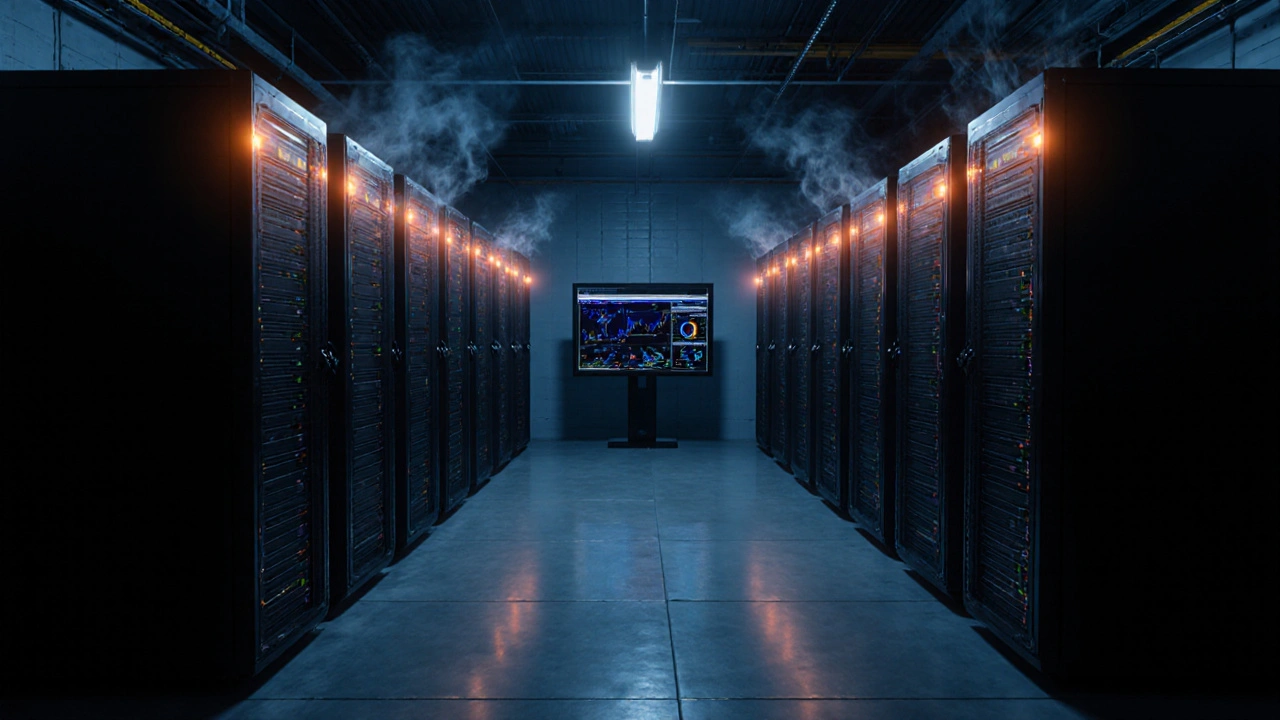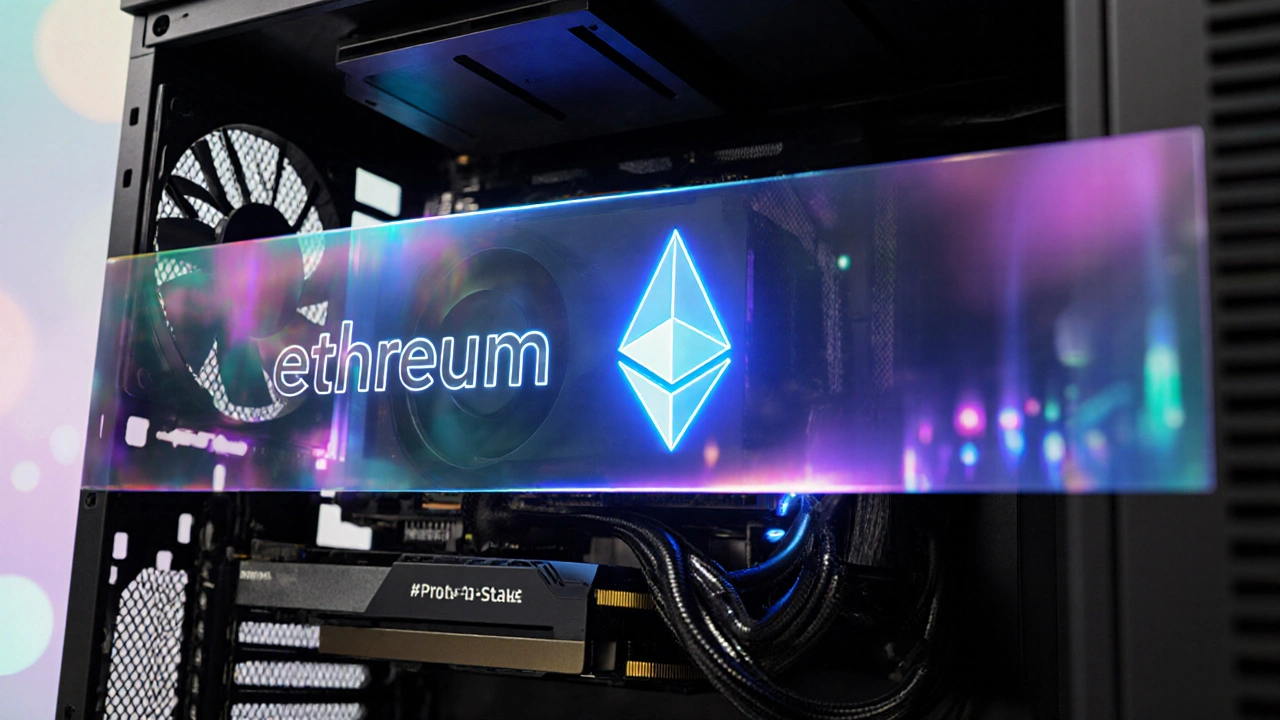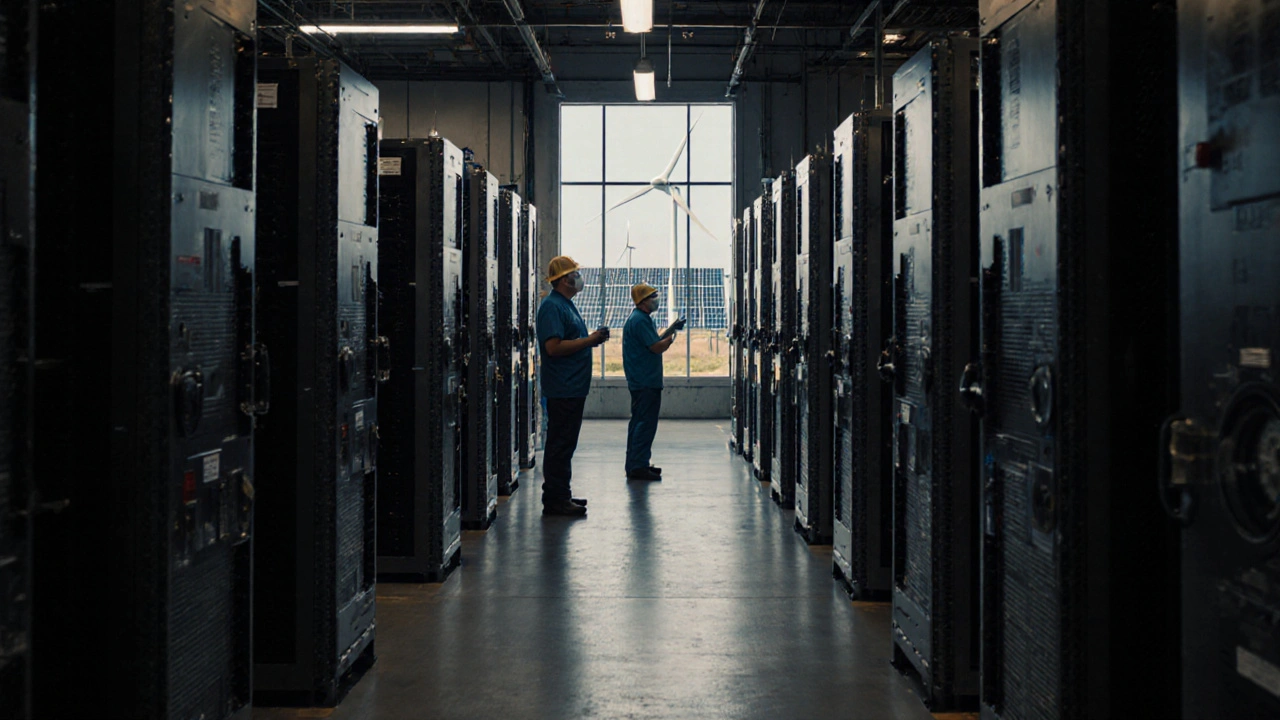What Is Crypto Mining? A Simple Breakdown of How It Works Today
 Nov, 1 2025
Nov, 1 2025
Bitcoin didn’t become worth thousands of dollars because people just bought it. It became valuable because thousands of computers around the world were working nonstop to secure its network - that’s crypto mining. If you’ve ever wondered how new coins appear out of nowhere or why your graphics card is running hot, this is where it all starts.
How Crypto Mining Actually Works
Crypto mining is the process of verifying transactions on a blockchain and adding them to a public ledger. Think of it like keeping a shared notebook that everyone can see but no one can erase. When someone sends Bitcoin or Ethereum, that transaction needs to be confirmed. Miners collect these transactions, bundle them into a block, and solve a complex math puzzle to prove they did the work. The first one to solve it gets to add the block to the chain - and earns a reward.
This puzzle isn’t something you can guess. It’s a cryptographic hash function that requires massive computing power. The system is designed so that solving it takes about 10 minutes for Bitcoin. That delay keeps the network stable and prevents fraud. The math is hard on purpose - it makes cheating too expensive.
The reward? For Bitcoin, it’s currently 3.125 BTC per block (as of 2025), worth roughly $200,000 at today’s prices. But that reward halves every four years. The next halving is due in 2028. That’s why early miners got 50 BTC per block - and why mining today is nothing like it was in 2010.
What Hardware Do You Need?
Back in 2009, you could mine Bitcoin with a regular laptop. Today? Forget it. You need specialized machines called ASICs - Application-Specific Integrated Circuits. These are chips built for one thing: solving Bitcoin’s hash puzzles as fast as possible. A good ASIC miner like the Antminer S21 can do 200 terahashes per second. That’s 200 trillion guesses per second.
For other coins like Ethereum, which switched to proof-of-stake in 2022, mining isn’t possible anymore. But coins like Litecoin, Dogecoin, and Ravencoin still use proof-of-work. For those, you can still use high-end GPUs - the same graphics cards used for gaming. A single RTX 4090 can earn about $4-$6 per day mining Ravencoin, depending on electricity costs and coin prices.
But here’s the catch: electricity is your biggest expense. In the UK, where the average rate is 24p per kWh, running a high-end ASIC 24/7 can cost over £150 a month. If your miner uses 3,200 watts and your electricity is 30p/kWh, you’re spending more than you earn unless the coin price jumps.
Proof of Work vs. Proof of Stake
Not all cryptocurrencies use mining. Ethereum, Cardano, and Solana moved to proof-of-stake. Instead of computers solving puzzles, validators are chosen based on how much crypto they “stake” - or lock up - as collateral. It’s like betting your own money to help run the network. If you behave honestly, you get paid. If you cheat, you lose your stake.
This shift cut Ethereum’s energy use by over 99%. That’s why most new projects avoid mining. It’s not just about efficiency - it’s about regulation. The EU and UK are pushing for greener crypto. Mining farms are being shut down in places like Sweden and Kazakhstan over power grid strain.
So while Bitcoin still relies on mining, the rest of the crypto world is moving away from it. That makes Bitcoin mining more of a niche industrial activity than a hobby. You’re not just competing with other hobbyists - you’re competing with big mining companies in Texas, Kazakhstan, and Canada that run entire warehouses full of ASICs.

Can You Still Mine Crypto Profitably?
For most people? No. Not unless you have access to cheap power.
Let’s say you buy an Antminer S21 for £4,500. It uses 3,250 watts. At 24p/kWh, you’ll spend about £190 a month on electricity. If Bitcoin is at $65,000, you might earn £150-£180 a month in rewards after fees. That’s a loss. Even if Bitcoin hits $100,000, you’re barely breaking even after hardware depreciation and cooling costs.
There are exceptions. If you live in a place with free or subsidized electricity - like parts of Iran or Venezuela - mining can still work. Or if you have solar panels and excess power. Some UK farmers have started mining using biogas from their livestock. Others use idle wind turbines at night when the grid doesn’t need power.
But for the average person in Manchester? Mining is a money-losing experiment. You’re better off buying Bitcoin directly and holding it.
What About Mining Pools?
Since solo mining is nearly impossible now, most miners join pools. A mining pool is a group of miners who combine their computing power. When the pool finds a block, the reward is split based on how much work each member contributed.
Instead of waiting years to find a block on your own, you get small payouts daily. It’s like buying a lottery ticket every day instead of waiting to win the jackpot. Popular pools include Slush Pool, F2Pool, and Antpool.
But pools take a fee - usually 1-3%. And if the pool gets too big, it risks centralizing control over the network. That’s why some miners avoid the biggest pools, even if it means slower payouts.

Is Crypto Mining Legal?
In the UK, yes - it’s completely legal. But it’s not without risks.
The government doesn’t ban mining, but it does watch energy usage. The National Grid has warned that large-scale mining could destabilize local power supplies. Some councils in Greater Manchester have started requiring permits for mining operations over 5 kW. If you’re running a full rack of ASICs in your garage, you could get flagged.
Also, HMRC treats mining rewards as taxable income. If you mine Bitcoin and sell it later, you owe Capital Gains Tax on the profit. If you’re mining as a business, you might need to register for VAT. Keep detailed records. Many miners have been hit with surprise tax bills because they didn’t track their coin values at the time they were earned.
Why Does It Matter If You Don’t Mine?
You don’t need to mine to benefit from crypto. But understanding mining helps you understand why Bitcoin is secure. The more miners there are, the harder it is to hack the network. That’s why Bitcoin’s value is tied to its hash rate - the total computing power securing it.
When hash rate drops - like after China banned mining in 2021 - prices often dip. When it rises again, confidence returns. Mining isn’t just about creating new coins. It’s the backbone of trust in the system.
Even if you’re just holding Bitcoin, you’re relying on miners to keep the network running. If miners stop because it’s no longer profitable, transactions slow down. Fees go up. The whole system becomes less reliable.
That’s why the future of mining matters - even if you never touch a GPU or ASIC.

Michael Gradwell
November 7, 2025 AT 04:15Miners are just glorified electricity hogs pretending to be tech pioneers. Bitcoin’s a pyramid scheme with more hardware.
Emmanuel Sadi
November 7, 2025 AT 06:27Oh wow so you mean to tell me running a rig in your garage is like trying to outlift a freight train with your bare hands? Good luck with that, champ. Meanwhile, China just bought half the ASICs and now they’re mining with coal-powered dynamos. You’re not a miner. You’re a cautionary tale with a fan.
Wilda Mcgee
November 7, 2025 AT 10:18Okay but imagine if you had solar panels on your roof and your miner just quietly hummed away using the extra juice you’d otherwise waste? That’s not mining-that’s being smart with energy. I’ve got a friend in Arizona who runs two S21s off his solar array and he says it’s like having a free ATM that prints Bitcoin instead of cash. He doesn’t even pay for grid power anymore. It’s not about the hardware, it’s about the source.
Ian Maggs
November 9, 2025 AT 07:50...and yet, the very act of mining-this relentless, energy-intensive, algorithmic ballet-creates a kind of digital sanctity. Not because it’s efficient, but because it’s *expensive*. The cost of fraud becomes greater than the reward. That’s not a bug-it’s the feature. The blockchain doesn’t trust you. It trusts entropy. It trusts thermodynamics. It trusts the fact that you’d have to burn more electricity than a small country to rewrite history. And that... that is beautiful.
Chuck Doland
November 10, 2025 AT 04:23It is imperative to recognize that the transition from proof-of-work to proof-of-stake represents not merely a technical optimization, but a philosophical reorientation of decentralized consensus mechanisms. The energy expenditure inherent in mining, while substantial, historically functioned as a cryptographic anchor-ensuring decentralization through economic disincentives. The current paradigm, while environmentally preferable, risks centralization through capital concentration among stakers with disproportionate holdings. One must therefore evaluate not only efficiency, but resilience.
Madeline VanHorn
November 11, 2025 AT 09:47Ugh. So you’re telling me I have to buy a $5k machine just to lose money? I’m not even mad. I’m just disappointed. Like, why do people still do this? It’s 2025. Buy the dip. Just buy the dip.
Ryan Toporowski
November 13, 2025 AT 06:45Don’t give up yet! 💪 If you’ve got cheap power, even $1/day adds up. And hey-mining is like crypto meditation. You just sit there, watch the hash rate, and trust the math. 🤖⚡ I’ve got a little rig in my basement. It’s not profitable... but it’s mine. And that counts for something. 😊
Chris Atkins
November 14, 2025 AT 23:04Back in the day I mined Dogecoin on my laptop while watching Netflix. Got like 500 DOGE. Worth like 5 bucks. Best 3 hours of my life. Now I just HODL. The future’s in staking. Mining’s for the old school. And the rich. And the people with warehouses.
Jen Becker
November 15, 2025 AT 11:05They’re coming for your electricity. They’re coming for your GPU. They’re coming for your dreams. I saw a news report. They’re calling miners ‘energy terrorists.’
Samuel Bennett
November 16, 2025 AT 02:48Did you know the NSA designed the SHA-256 algorithm? And now they’re sitting on all the ASICs? This isn’t mining. It’s a government backdoor with a blockchain skin. You’re not earning Bitcoin. You’re paying for surveillance.
Flannery Smail
November 17, 2025 AT 22:36Wait so you’re saying if I live in Texas and have a free power line from my cousin’s wind farm I can make money mining? I thought you said it was impossible. Which is it? You guys are all over the place.
Rob D
November 19, 2025 AT 12:39America built this. The ASICs. The power grids. The innovation. Europe’s crying about energy use while they’re buying Bitcoin mined by American miners. We’re the real backbone. You don’t get to tax us and then tell us to shut down. This isn’t just crypto. This is American grit.
Nicholas Carpenter
November 21, 2025 AT 10:51It’s easy to say mining is dead until you realize you’re relying on it every time you send a transaction. The people running those warehouses? They’re not villains. They’re the unseen librarians of the digital age. We don’t need to join them-but we should respect them. And maybe, just maybe, support policies that make clean mining possible. Not ban it. Improve it.
Jess Ciro
November 23, 2025 AT 07:52They’re lying. The halving isn’t in 2028. It’s already happened. They’re hiding it. The real reward is 1.5625 BTC. The government’s manipulating the numbers. Don’t trust the charts. Don’t trust the pools. They’re all in on it.